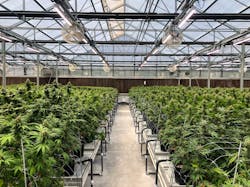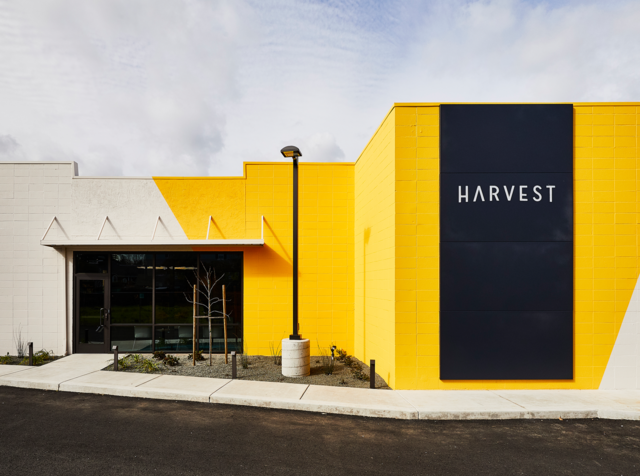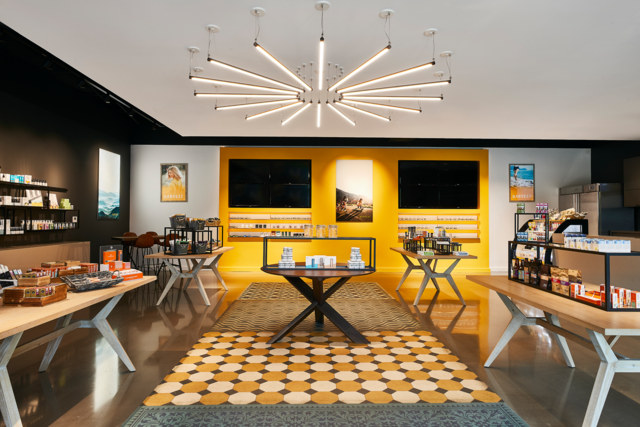This article originally appeared in the October 2020 issue of Security Business magazine. When sharing, don’t forget to mention @SecBusinessMag on Twitter and Security Business magazine on LinkedIn.
Twelve states are now “recreational” marijuana states, offering a wide variety of cannabis products. In addition, nearly two dozen states are “medical” marijuana states, offering cannabis products through a doctor prescription. In 2020, there are thousands of facilities involved in the cannabis industry in some way – production, processing, storage, transportation and retail.
Such a new and different type of industry presents a wide array of security challenges. For starters, many of these operations have large amounts of cash on hand, because they operate outside of regular banking channels. One analysis by the Wharton School of Business Public Policy Initiative found that, “in the absence of being banked, one in every two cannabis dispensaries were robbed or burglarized – with the average thief walking away with anywhere from $20,000 to $50,000 in a single theft.”
Security integrators seeking to service this fast-growing industry must be able to effectively scale large-footprint facilities and standardize the approach for every facility with proven solutions tailored specifically for the cannabis space. That said, the basics of cannabis security lean on the same pivotal technologies of any successful security deployment. It must take into consideration police response times, minimize false alarms, and secure the property from every angle – both visually and physically.
Video Surveillance
Cannabis operators need constant eyes and visibility on operations – from products, to cash, to transactions, shipping, etc. Heavy regulations in this industry require visibility and audit trails everywhere, including processing, packaging, transactions records and more. Video surveillance is not there just to meet regulatory requirements; instead, synergy between the security solutions specified plus the environment are pivotal to the success of the overarching plan.
Storage and Retention: The integrator must size system footprint based on different state regulations. Michigan, for example, has a 30-day video retention requirement, whereas Pennsylvania demands two-year retention. It is critical to select a video storage and playback system that can scale in performance, capacity and operational use.
One size does not fit all; in fact, a successful integrator in the cannabis space will come armed with multiple, varied system designs for multi-state operators to meet different environmental factors and regulatory requirements.
Installation and Placement: Cameras in cannabis retail environments should be positioned for complete situational awareness. On the retail floor, no customer should be able to handle product without several cameras looking at them. Integrators should look for 360-degree fisheye cameras, in addition to using zone cameras. These cameras can be coupled with analytics that assist with product display and placement, such as heat mapping. Like they would for any customer, a savvy integrator should educate the end-user on the potential business benefits of a video surveillance system and analytics that go beyond security.
Cultivation: In addition to providing video surveillance for security, in the cannabis cultivation and growing environment, a security integrator must also become a trusted partner in the successful growth of plants. Today's greenhouse growing almost always includes an automated light deprivation system, so growers can harvest several times per year by putting the sun on their schedule. Integrators should specify IR cameras and integrate them with alarm systems to adhere to the greenhouse schedule and minimize light pollution.
Access Control
When cannabis cultivators apply for a licenses (usually a highly competitive process), they generally specify elaborate and access control. They should not be creating these specifications on their own; in fact, security integrators in this space should embrace the trusted partner relationship by working with cultivators throughout the application process to navigate and plan the most appropriate – and feasible – access control systems and features.
Most cannabis regulations specify the tracking of all people are and their movement throughout a facility. This becomes a daunting task when certain multi-use cannabis facilities or campuses include retail, growing and processing all within hundreds of yards of each other. Thankfully, most electronic access control systems and accessories provide this ability along with scalability and the audit trails that cannabis regulations require.
Intrusion Detection
It is critical for integrators to know local and state requirements related to intrusion detection, especially compliance with false alarm reduction ordinances. With every deployment or installation of an alarm system, an annual test should be conducted.
The best systems include varying sensors with targeted placements to track vibration, motion, glass break and more, while integrating with video surveillance software to trigger cameras upon alarm. Keep in mind, that more sensors do not necessarily make a facility more secure. It is actually counter-intuitive: 100 sensors in a given space is not better than 30 well-placed, well-thought out sensors, as the saturated sensor environment will yield far too many false alarms.
Gary House founded Dem360 in 2013 to fulfill an unmet market need of a one-stop shop for IT products and services. Learn more at www.dem360.com.

 Harvest Health & Recreation Inc., is a multi-state cannabis operator (MSO).Photo: Harvest Health & Recreation
Harvest Health & Recreation Inc., is a multi-state cannabis operator (MSO).Photo: Harvest Health & Recreation A look inside one of Harvest Health & Recreation's retail dispensaries.Photo: Harvest Health & Recreation
A look inside one of Harvest Health & Recreation's retail dispensaries.Photo: Harvest Health & Recreation
